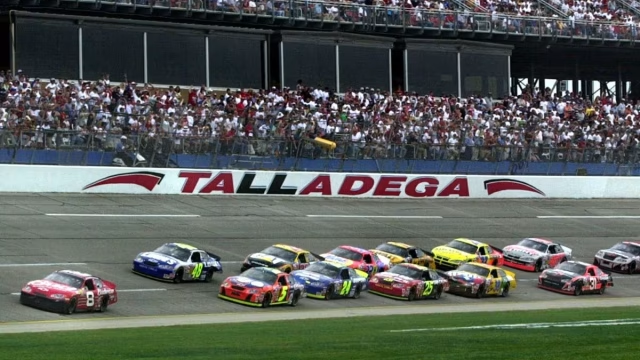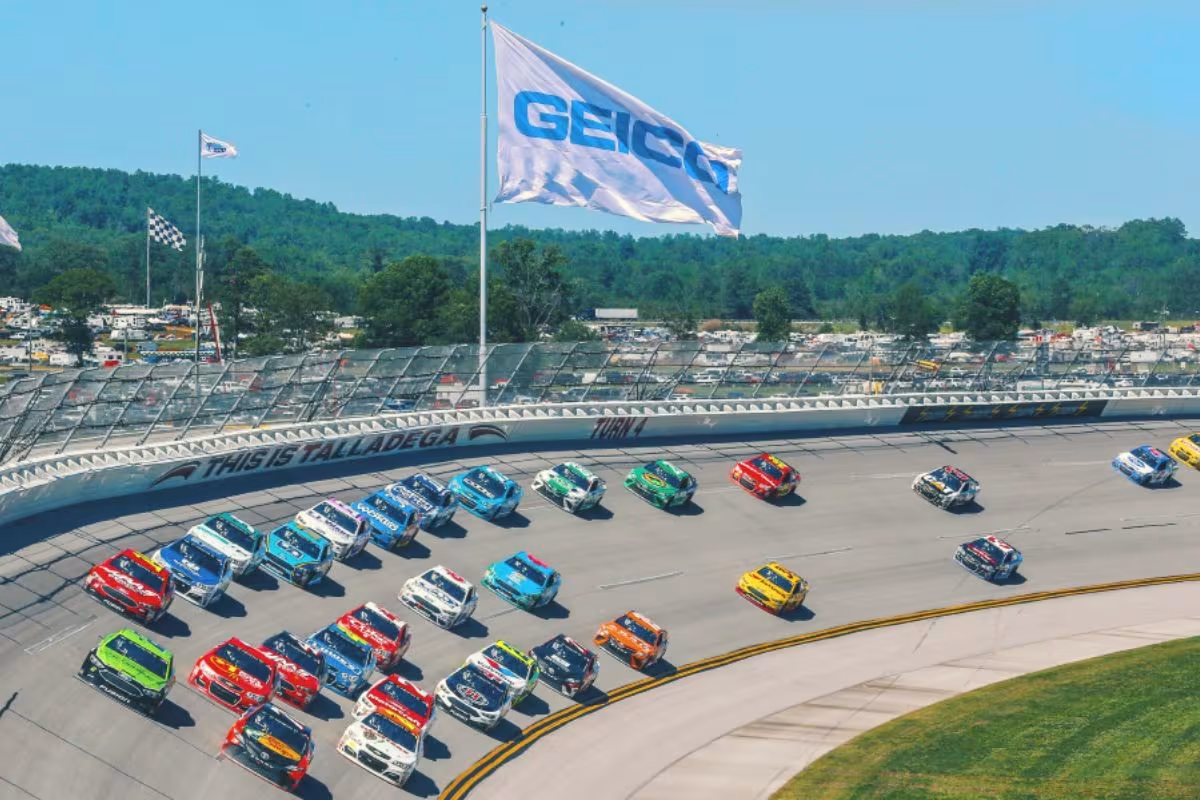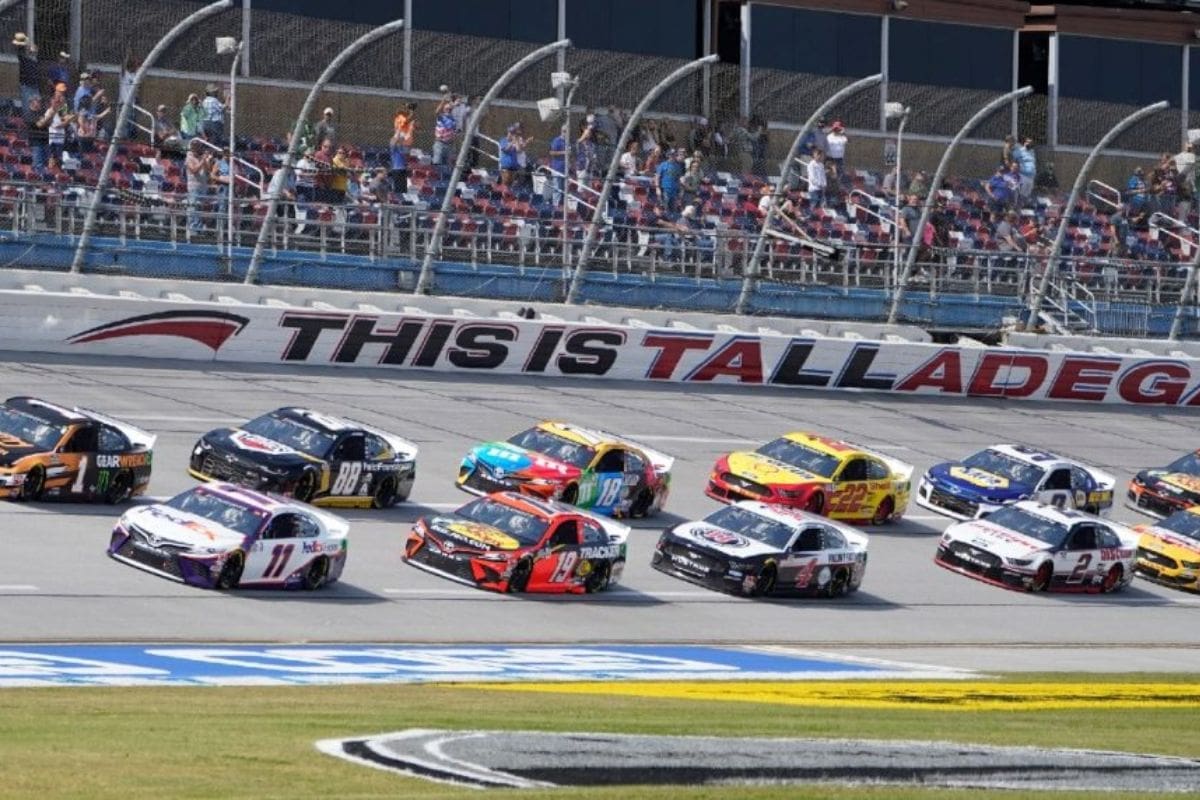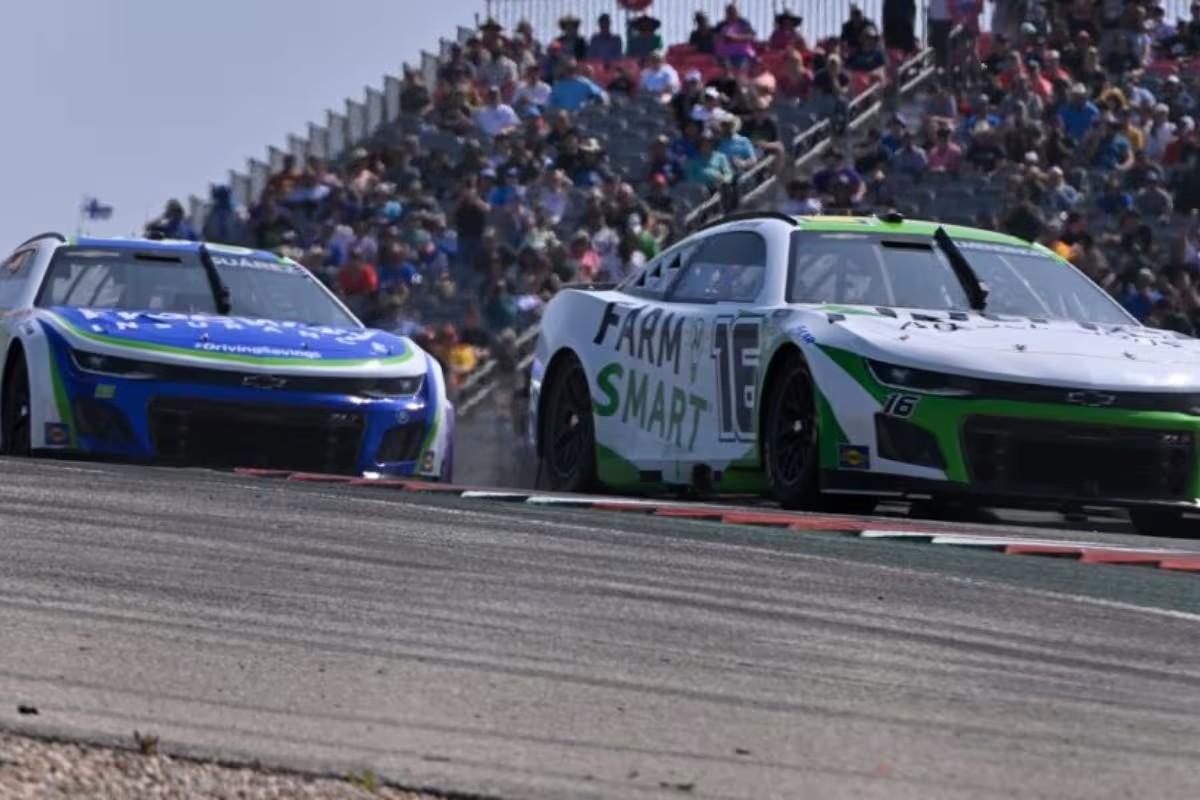NASCAR’s Risky Talladega Safety Move: NASCAR’s recent safety measures at Talladega racetrack, aimed at mitigating the risks associated with high-speed racing, have drawn sharp commentators from fans who question their effectiveness. The proposed aerodynamic adjustments, viewed by many as reactive rather than proactive, have ignited a debate about the true nature of safety in a sport characterized by its dangerous enticement. As frustration mounts, with fans vocally declaring, “You can’t fix flipping, you dumba**,” it raises a critical question: are these measures sufficient to address the fundamental issues inherent in racing, or is NASCAR merely masking deeper vulnerabilities?
Key Highlights
- Fans express frustration over NASCAR’s recent safety measures, questioning their effectiveness in preventing flipping incidents at Talladega.
- Previous safety fixes, like “shark fins,” have been criticized for failing to address fundamental risks associated with high-speed racing.
- The introduction of unproven safety modifications raises concerns about their potential to create new complications rather than resolving existing issues.
- Emotional responses from the community reflect deep concerns for driver safety amid ongoing uncertainty about NASCAR’s commitment to meaningful changes.
- Historical data and past incidents highlight the ongoing struggle to balance competitive excitement with effective safety protocols at Talladega.
Talladega’s Upcoming Race and Safety Concerns
As NASCAR prepares for the upcoming race at Talladega, safety concerns loom large in the minds of teams and fans alike. The Talladega track, often referred to as the “beast” of NASCAR, a term used to define the track because of its notorious reputation for unpredictable and dangerous racing conditions.
The recent spring race at this formidable venue witnessed a series of incidents, particularly spine-chilling wrecks that have sparked renewed discussions about driver safety. The severity of these wrecks has raised eyebrows, especially in the wake of Corey LaJoie’s unsettling flips at Michigan, which emphasized the potential risks drivers face at high speeds.
While teams have previously adopted fuel-saving strategies to improve performance, these tactics pale in comparison to the dangers posed by catastrophic Crashes. The juxtaposition of fuel preservation and the threat of serious injury highlights a commentators tension within the sport.
NASCAR’s recent decision to implement minor adjustments to the cars in response to LaJoie’s incident demonstrates a growing recognition of the need for improved safety measures. However, such modifications may not address the fundamental issues that contribute to the inherent peril of racing at Talladega.
Fans express questioning whether adjustments can genuinely mitigate the risks associated with flipping vehicles. As the race weekend approaches, the balance between competitive spirit and safety will be a focal point, prompting teams and stakeholders to reevaluate their strategies in view of the potential hazards that lie ahead.
NASCAR’s Proposed Safety Measures
NASCAR’s commitment to improving safety measures at Talladega reflects a proactive approach to addressing the inherent risks of high-speed racing. Reportedly exploring new measures to mitigate the potential for pile-ups, a concern showed by the track’s history of dramatic crashes. However, this initiative has been met with fans, particularly in view of the limited success of similar efforts at Daytona racetrack.
Historically, Talladega’s treacherous nature has showed notable safety advancements. For example, the infamous crash during the 1993 Winston 500, where Dale Earnhardt’s car sent Russell Wallace airborne, led to the introduction of roof flaps designed to reduce the likelihood of cars flipping. This incident showed the necessity of adapting safety protocols in response to the evolving dynamics of racing.
Furthermore, following a harrowing flip by driver LaJoie in Michigan, NASCAR implemented the right-side rear-window air deflector to further improve vehicle stability.
Despite these advancements, the effectiveness of past measures remains a point of contention among fans. With whispers of new protocols showing on social media, the community’s reaction has been one of frustration, questioning the efficacy of NASCAR’s strategies to guarantee driver safety.
As NASCAR navigates the complexities of racing at Talladega, the challenge lies not only in implementing new safety features but also in regaining the trust of its fanbase, who remain skeptical of the impact these measures may yield.
Concerns Over NASCAR’s Ineffective Measures
Concerns surrounding the effectiveness of NASCAR’s safety measures have intensified, particularly in view of recent incidents that have cast doubt on their implementation. The recent Daytona track race exemplified this issue when Josh Berry experienced a fearsome spin-out that shows the inadequacy of the safety protocols in place. Despite this alarming event, NASCAR has suggested that similar safety modifications will be utilized for the upcoming Talladega Superspeedway race, raising questions about the decision-making process behind these measures.
Bob Pockrass reported that NASCAR has engaged drivers in discussions regarding potential changes, with ideas such as an air deflector on the right side of the windshield being floated. However, the lack of definitive decisions and the emphasis on unproven modifications may not inspire confidence among drivers and fans alike.
“NASCAR talked to drivers at their meeting today about potential changes to cars just for Talladega. They said no decisions final. Drivers mentioned one change could potentially impact visibility as NASCAR apparently considering air deflector of sorts on right side of windshield.” – (Pockrass)
NASCAR talked to drivers at their meeting today about potential changes to cars just for Talladega. They said no decisions final. Drivers mentioned one change could potentially impact visibility as NASCAR apparently considering air deflector of sorts on right side of windshield.
— Bob Pockrass (@bobpockrass) September 28, 2024
As these suggestions aim to improve visibility, they also risk creating new complications that could further exacerbate existing safety concerns. The commentators view shared by many fans reflects a growing impatience with NASCAR’s approach.
While the organization appears committed to advancing safety, the reliance on experimental measures in high-stakes environments seems insufficient in addressing the fundamental risks inherent in racing at venues like Talladega.
As NASCAR navigates these challenges, the need for transparent, effective, and proven safety strategies remains paramount to guarantee the well-being of drivers, teams, and spectators alike. The call for a reevaluation of safety measures has never been more urgent.
History of NASCAR’s Efforts at Talladega
Throughout its history, Talladega Superspeedway has been a focal point for NASCAR‘s ongoing efforts to improve both the excitement of racing and the safety of its drivers. This 2.66-mile track has witnessed a number of notable changes aimed at enhancing the competitive nature of the races while addressing the inherent risks associated with high-speed motorsport.
One remarkable instance occurred before the 2000 Winston 500 race when NASCAR mandated aerodynamic modifications and restrictor plate adjustments. These alterations were designed to improve throttle response and increase horsepower, ultimately creating a more dynamic racing environment.
Barry Dodson, a former crew chief, expressed optimism about these changes, indicating that they would allow drivers with drafting experience to have a fair shot at leading the race. Such adaptations reflect NASCAR’s recognition of the unique challenges posed by Talladega’s speedway drafting-heavy layout and the need to balance safety with the thrill of competition.
“It should lend to great, great racing because just about anybody with drafting experience will have a shot to get to the front and lead the race.” – (Barry Dodson)
However, the track’s latest updates have not generated the same level of enthusiasm among stakeholders. The ongoing struggle to mitigate the dangers of flipping and crashes remains a commentators concern, as NASCAR grapples with the dual pressures of maintaining fan engagement and ensuring driver safety.
Fan Backlash and Uncertainty Around the Safety Update
Amid rising tensions surrounding recent safety updates at Talladega speedway, a NASCAR racetrack, fans have voiced considerable and uncertainty regarding the effectiveness of these measures. The inherent unpredictability of the drafting-dependent track, often leading to the chaotic “Big One,” on the racing tracks heightens these concerns.
The announcement of notable changes to the 2024 schedule, particularly the inclusion of Talladega speedway racing track in the semi-final round of the 2025 playoffs, has only intensified fan frustrations. commentators have expressed skepticism about NASCAR’s approach, past failures such as the ineffective “shark fins” introduced at Daytona race track.
“Oh for f-ks sake. Here we go again. Who’s ready for Dega to su*k now. Lol.”
“Oh god we have to deal with Talladega bullsh*t next week.”
“If we’re adding fins to the windshield we’ve lost the plot.”
“You can’t fix flipping you dumba-es.”-(fans reactions)
One fan succinctly encapsulated this sentiment: “You can’t fix flipping you dumba-es.” This sentiment reflects a broader worry that NASCAR’s attempts to improve safety may lack the necessary foresight. As one observer pointed out, the inclusion of fins to the windshield might indicate a departure from substantive change, suggesting that NASCAR is prioritizing short-term fixes over thorough solutions.
“If I were guessing they’re still in the “bandaid before we fix it” stage but I’m actually starting to doubt any real major shift will come for the aero package of the car.” -(fans’ reactions)
Moreover, the notion that NASCAR remains in a “bandaid before we fix it” phase has led to increasing doubt about the potential for meaningful alterations in the car’s aerodynamic package. Fans are left covering with a sense of uncertainty about the effectiveness of modifications that seem more reactive than proactive.
News in Brief: NASCAR’s Risky Talladega Safety Move
The ongoing safety initiatives at Talladega speedway, a NASCAR racetrack, highlight a notable disconnect between NASCAR’s proposed measures and the concerns voiced by fans. While aerodynamic adjustments may address certain issues, they fail to confront the fundamental dangers associated with high-speed racing. The frustration expressed by the fanbase emphasizes a demand for thorough, proactive safety solutions rather than reactive measures. As the organization navigates these challenges, the call for effective strategies to improve driver safety at Talladega speedway becomes increasingly urgent.
ALSO READ: NASCAR Cup Series Race Disrupted Amid Concerns Over Hurricane Helene



